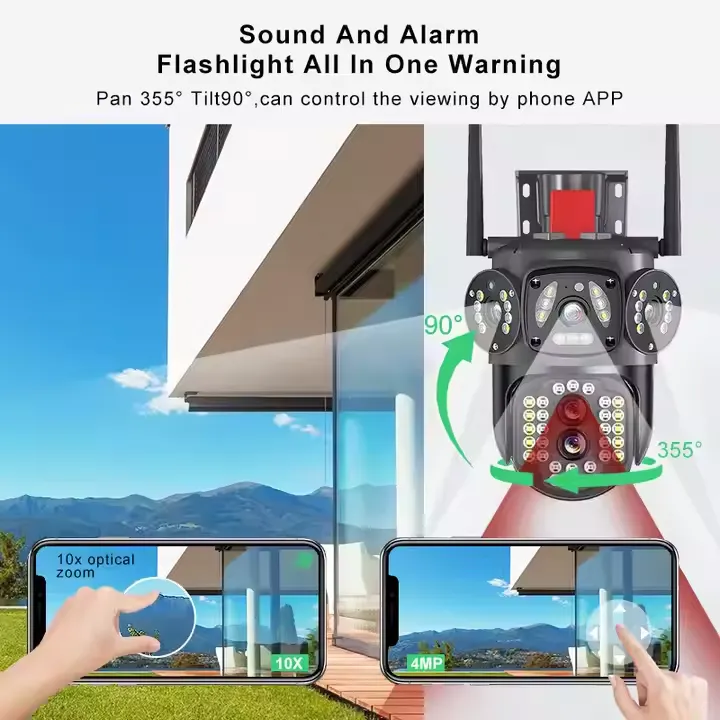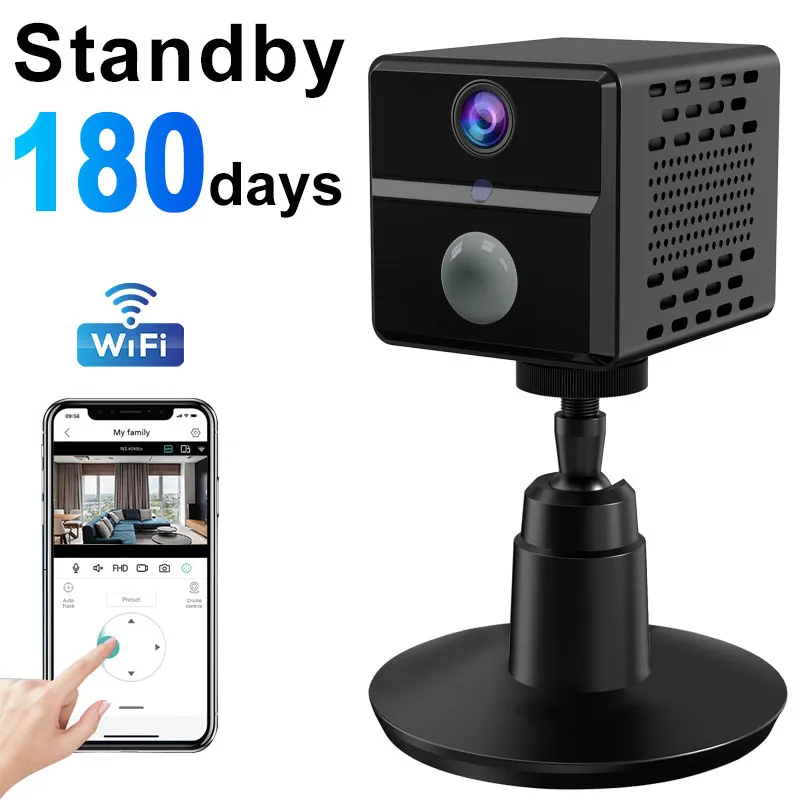No mundo atual, preocupado com a segurança, a videovigilância tornou-se um componente essencial de qualquer estratégia de segurança abrangente. O mercado global de videovigilância atingiu $45,5 mil milhões em 2022 e prevê-se que cresça para $83,3 mil milhões até 2030. Este enorme crescimento reflecte a importância crescente dos sistemas de monitorização visual na proteção de bens, na prevenção do crime e na recolha de provas cruciais. A videovigilância fornece monitorização 24 horas por dia, 7 dias por semana, dissuade a atividade criminosa, cria registos de provas, permite a visualização remota e reduz os custos do pessoal de segurança. Os sistemas actuais oferecem análises alimentadas por IA, reconhecimento facial e integração na nuvem, tornando-os ferramentas poderosas para empresas de todas as dimensões. O sistema de vigilância certo pode transformar sua postura de segurança, mas somente se você escolher equipamentos de fabricantes respeitáveis que atendam às suas necessidades específicas.
Quem são os principais fabricantes de câmeras de vigilância por vídeo em 2025?
O mercado de vigilância por vídeo transformou-se drasticamente nos últimos anos, com vários fabricantes a ganharem destaque através da inovação tecnológica e da penetração no mercado. Passei anos avaliando esses sistemas, e o cenário em 2025 revela líderes claros do setor com especializações distintas.
A Hikvision é a força dominante, comandando aproximadamente 20% da quota de mercado global. A sua análise alimentada por IA revolucionou a forma como as equipas de segurança respondem a potenciais ameaças, permitindo uma identificação mais precisa e menos alarmes falsos. Não muito atrás, a Dahua Technology detém cerca de 12% do mercado, com particular excelência na tecnologia de imagem térmica - uma capacidade crucial para ambientes que exigem monitorização 24 horas por dia, 7 dias por semana, independentemente das condições de iluminação.
A Axis Communications, com uma quota de mercado de cerca de 8% concentrada nos mercados europeu e norte-americano, distinguiu-se através de uma integração de rede excecional e de caraterísticas robustas de cibersegurança. Estas qualidades tornam os seus sistemas particularmente atractivos para implementações de nível empresarial em que a proteção de dados é fundamental.
| Fabricante | Quota de mercado | Especialização chave |
|---|---|---|
| Hikvision | ~20% | Análise com base em IA |
| Tecnologia Dahua | ~12% | Imagem térmica |
| Comunicações Axis | ~8% | Integração de redes e cibersegurança |
| Hanwha Techwin | ~5% | Processamento de imagens |
| Sistemas de segurança Bosch | ~4% | Flexibilidade de integração |
Os actores emergentes também estão a fazer ondas neste cenário competitivo. Tecnologia de Shenzhen JER ganhou atenção com as suas inovadoras câmaras WiFi de lente dupla e sistemas IP económicos, tornando a tecnologia de vigilância avançada mais acessível a pequenas e médias empresas sem grandes orçamentos de segurança.
A escolha entre estes fabricantes não tem apenas a ver com o reconhecimento da marca - tem a ver com o alinhamento dos seus pontos fortes tecnológicos específicos com os seus requisitos de segurança. Precisa de capacidades de reconhecimento facial num ambiente de retalho? Os sistemas de IA da Hikvision podem ser a sua melhor aposta. Está a operar em condições de temperatura extrema? As soluções térmicas da Dahua podem fornecer a fiabilidade de que necessita.

Quais as principais caraterísticas que deve procurar nos sistemas de vigilância modernos?
Depois de explorar os principais fabricantes, vamos falar sobre o que importa nesses sistemas. Depois de avaliar centenas de instalações de segurança, aprendi que a diferença entre uma vigilância adequada e excecional se resume muitas vezes a caraterísticas específicas e não apenas a nomes de marcas.
A qualidade da resolução sofreu uma transformação notável nos últimos anos. Embora 1080p já tenha sido o padrão de ouro, a resolução 4K tornou-se cada vez mais acessível e fornece detalhes significativamente melhores para identificar rostos, placas de veículos e outros elementos críticos. No entanto, não se deixe deslumbrar apenas pelas especificações de resolução - uma câmara 4K com um processamento de imagem deficiente terá um desempenho inferior a um sistema de 1080p bem concebido.
| Caraterística essencial | Porque é que é importante |
|---|---|
| Alta resolução (4K) | Captura detalhes faciais a distâncias maiores |
| Visão nocturna | Mantém a visibilidade em condições de luz zero |
| Análise de IA | Reduz os falsos alarmes até 90% |
| Acessibilidade remota | Permite a monitorização a partir de qualquer lugar |
| Resistência às intempéries (IP66+) | Garante a fiabilidade no exterior |
O verdadeiro fator de mudança na vigilância moderna é a inteligência artificial. Já vi sistemas alimentados por IA transformarem as operações de segurança ao distinguirem entre humanos, veículos e animais, reduzindo drasticamente os falsos alarmes. Em vez de analisar inúmeros alertas de movimento (a maioria desencadeada por árvores que balançam ou gatos da vizinhança), as equipas só recebem notificações para preocupações reais de segurança.
Tecnologia de lente dupla representa outro avanço significativo, combinando a monitorização de grande angular com poderosas capacidades de zoom numa única unidade. Esta tecnologia, presente em ofertas inovadoras de fabricantes como a Shenzhen JER Technology, elimina os ângulos mortos, mantendo a capacidade de captar imagens detalhadas quando necessário.
As opções de armazenamento evoluíram para além dos simples discos rígidos. Os sistemas actuais oferecem abordagens híbridas que combinam armazenamento local com cópia de segurança na nuvem, garantindo que as suas filmagens permanecem acessíveis mesmo que o hardware seja danificado ou roubado. Procure sistemas com configurações de armazenamento flexíveis em vez de soluções proprietárias que o prendem a um único ecossistema.
Os sistemas de vigilância mais eficazes servem agora como ferramentas preventivas e não apenas como colectores de provas. Através da deteção precoce de padrões invulgares e objectos abandonados, estes sistemas ajudam o pessoal de segurança a intervir antes que os incidentes se agravem.

Como é que os diferentes fabricantes se comparam em termos de preço e valor?
Depois de explorar as caraterísticas essenciais, vamos falar de dinheiro e sentido. Nos meus 15 anos de consultoria em segurança, descobri que concentrar-se apenas no preço inicial é o erro mais caro que as empresas cometem. A verdadeira equação de custos é muito mais complexa e, se for bem feita, pode poupar milhares ao longo da vida útil de um sistema.
O mercado divide-se, grosso modo, em três níveis de preços. A Hikvision e a Dahua dominam o segmento económico ($50-$300 por câmara), tornando-as escolhas populares para pequenas empresas e aplicações residenciais. No segmento premium, a Axis Communications e a Bosch têm preços de $300-$1.000+ por unidade, visando clientes empresariais que dão prioridade à fiabilidade em detrimento da poupança inicial. A gama intermédia ($100-$400) inclui empresas emergentes como Tecnologia de Shenzhen JERA gama de produtos da marca, que oferece caraterísticas competitivas sem o preço premium.
| Escalão de preços | Caraterísticas | Considerações sobre a propriedade total |
|---|---|---|
| Orçamento ($50-100) | Resolução básica, visão nocturna limitada | Garantias de 1-2 anos, taxas de avaria mais elevadas |
| Gama média ($100-300) | Melhor resolução, visão nocturna melhorada | Garantias de 2-3 anos, consumo de energia moderado |
| Premium ($300-1,000+) | Resolução 4K, IA avançada, funcionalidades especializadas | 3-5 anos de garantia, 30-50% menor consumo de energia |
Os sistemas de nível básico podem parecer uma pechincha no início, mas muitas vezes surpreendem os utilizadores com custos ocultos. Já vi muitos clientes gastarem mais a substituir câmaras de baixo custo que falharam do que teriam investido em equipamento de qualidade desde o início. Aquelas câmaras $79 tornam-se subitamente caras quando precisam de ser substituídas a cada 18 meses!
Os fabricantes de topo justificam os seus preços mais elevados através de benefícios tangíveis: Garantias de 3-5 anos em vez dos 1-2 anos normais das opções económicas; hardware concebido para funcionar mais de 80.000 horas sem falhas; suporte de software que se prolonga por mais de 5 anos em vez de se tornar obsoleto ao fim de 2-3 anos; e consumo de energia significativamente mais baixo, reduzindo as despesas operacionais em 30-50% anualmente.
O cálculo torna-se ainda mais claro quando se consideram os custos de mão de obra. Cada chamada de serviço para substituir uma câmara avariada custa normalmente $150-250 só em tempo de técnico, excedendo muitas vezes a diferença de preço entre equipamento económico e de qualidade.
Que tecnologias de vigilância estão a transformar a indústria?
Agora que examinámos as considerações sobre preços, vamos explorar as inovações tecnológicas que estão a remodelar a vigilância. Tendo testado essas tecnologias em várias implementações, posso confirmar que estamos testemunhando nada menos que uma revolução no que sistemas de câmaras pode realizar.
A inteligência artificial é o principal fator de mudança. Ao contrário dos sistemas tradicionais que se limitam a gravar imagens para análise posterior, as câmaras com IA interpretam ativamente o que vêem em tempo real. Recentemente, instalei um sistema de IA para um cliente retalhista que reduziu os falsos alarmes em 87% e, simultaneamente, forneceu contagem de clientes e mapas de calor para otimização da disposição da loja. O mesmo câmaras de proteção contra Os roubos fornecem agora informações comerciais acionáveis.
| Tecnologia | Adoção atual | Principais fabricantes |
|---|---|---|
| Reconhecimento facial | 35% | Hikvision, Dahua, Hanwha |
| VMS baseado na nuvem | 60% | Eagle Eye, Verkada, Axis |
| Imagem térmica | 25% | FLIR, Dahua, Hikvision |
| Computação de ponta | 15% | Axis, Hanwha, JER Technology |
Baseado na nuvem sistemas de gestão de vídeo alcançaram uma notável penetração de mercado 60% por boas razões. Eliminam a necessidade de servidores no local, permitem uma visualização remota segura a partir de qualquer lugar e tratam automaticamente das actualizações de software. Para empresas com várias localizações, esta gestão centralizada é uma enorme vantagem.
A tecnologia de imagem térmica expandiu-se para além das suas aplicações militares e industriais tradicionais. Estes sistemas podem detetar potenciais intrusos na escuridão total, identificar temperaturas corporais elevadas para rastreio de saúde e até detetar problemas mecânicos em desenvolvimento antes de o equipamento falhar.
Computação periférica representa outro avanço significativo, processando a análise de vídeo diretamente na câmara em vez de enviar tudo para um servidor central. Isto proporciona alertas mais rápidos e optimiza a utilização da largura de banda - particularmente valioso para instalações com conetividade limitada.
A integração do 5G está apenas a começar, mas promete eliminar as barreiras finais à vigilância verdadeiramente sem fios e de elevado desempenho. A latência ultrabaixa e a enorme largura de banda permitirão a monitorização em tempo real de fluxos de vídeo 4K a partir de locais remotos.

Como deve escolher o fabricante certo para as suas necessidades?
Com todos estes fabricantes e tecnologias a considerar, como é que se escolhe o mais adequado? Depois de passar duas décadas a aconselhar empresas sobre implementações de segurança, desenvolvi uma abordagem sistemática que evita erros dispendiosos e remorsos do comprador.
Comece com uma avaliação detalhada dos requisitos. Peço sempre aos meus clientes que criem uma lista de verificação que inclua o número de câmaras, tipos de localização específicos (interior/exterior), desafios ambientais (temperaturas extremas, humidade, risco de vandalismo), funcionalidades pretendidas e necessidades de integração. Este simples exercício elimina potenciais incompatibilidades antes mesmo de começar a comparar marcas.
| Dimensão da empresa | Requisitos típicos | Fabricantes recomendados |
|---|---|---|
| Pequeno (1-3 câmaras) | Controlo de base, relação custo-eficácia | Tecnologia JER, Hikvision de nível básico |
| Médio (4-16 câmaras) | Algumas análises, fiabilidade | Dahua e Hikvision de gama média |
| Empresa (16+ câmaras) | Funcionalidades avançadas, escalabilidade | Axis, Bosch, Hikvision premium |
| Alta segurança | Caraterísticas reforçadas, análises | Hanwha Techwin, Avigilon |
Para pequenas operações de retalho com apenas 1-3 câmaras, as soluções económicas da Tecnologia de Shenzhen JER ou Hikvision de nível básico oferecem um excelente valor. O proprietário de uma cafetaria com quem trabalhei poupou quase $600 ao escolher as câmaras IP bullet da JER em vez das alternativas premium, sem qualquer diferença significativa em termos de funcionalidade para as suas necessidades específicas.
As empresas de média dimensão necessitam normalmente de 4 a 16 câmaras com capacidades mais sofisticadas. Neste caso, as ofertas de gama média da Dahua ou da Hikvision atingem o ponto ideal entre custo e funcionalidade. Os seus sistemas oferecem boas capacidades de análise sem o preço de nível empresarial.
As implementações empresariais com mais de 16 câmaras enfrentam desafios totalmente diferentes - a escalabilidade torna-se crucial, tal como a integração perfeita com o controlo de acesso, sistemas de alarme e outras infra-estruturas de segurança. Estes ambientes justificam tipicamente o investimento premium em sistemas Axis, Bosch ou Hikvision topo de gama.
Por último, não negligencie a qualidade do suporte. Mesmo o sistema mais avançado torna-se inútil se não conseguir obter assistência atempada durante as falhas. Digo aos clientes para telefonarem para as linhas de apoio do fabricante antes de comprarem - a capacidade de resposta que experimentam como potenciais clientes melhora normalmente quando se tornam clientes.
Conclusões
O panorama da videovigilância continua a evoluir rapidamente, com os fabricantes a alargarem constantemente as fronteiras tecnológicas para oferecerem soluções de segurança mais inteligentes e eficazes. De líderes de mercado como Hikvision e Dahua a participantes emergentes como a Shenzhen JER Technology, cada fabricante traz pontos fortes exclusivos para atender a diferentes necessidades de segurança e considerações de orçamento. Ao selecionar um sistema de vigilância, olhe para além do preço de compra inicial e considere a proposta de valor total - incluindo fiabilidade, suporte, garantia e as funcionalidades específicas que respondem aos seus desafios de segurança. A opção mais cara nem sempre é necessária, mas investir em equipamentos de qualidade de fabricantes conceituados geralmente paga dividendos por meio de maior confiabilidade e cobertura de segurança mais eficaz. À medida que as tecnologias de IA e nuvem continuam a transformar o setor de vigilância, o sistema escolhido não deve apenas atender aos requisitos atuais, mas também fornecer um caminho para a adoção de inovações futuras que melhorarão sua postura de segurança nos próximos anos.


